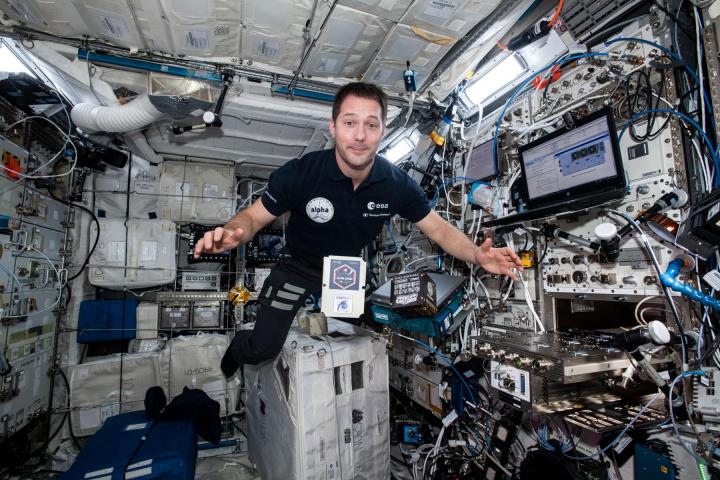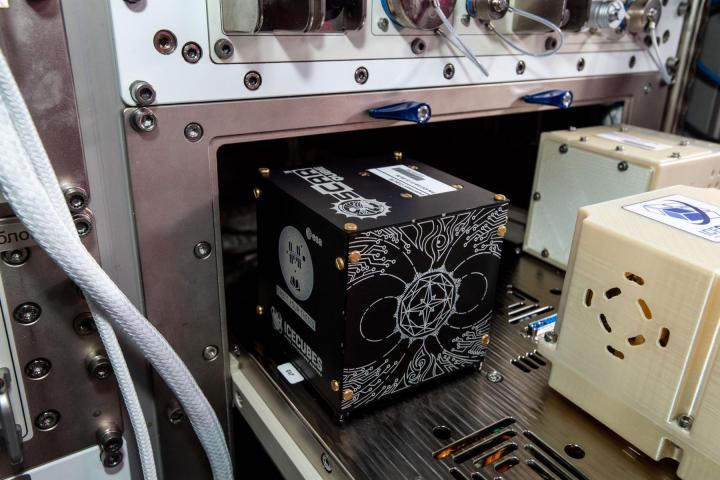
A team of students from Hasselt University submitted their experiment to the European Space Agency (ESA) programme last spring. They then had just one year to prepare the sensitive magnetometer. "This is an incredible honour for us students. We still can't realise that the device we built will be making measurements on board the ISS for ten months," explains Jaroslav Hrubý, a PhD student and leader of the student team that created the instrument.
The OSCAR-QUBE magnetometer is the first diamond-based quantum magnetometer built by students that will make measurements in outer space, specifically mapping the magnetic field around the Earth from space. The instrument is the third in a series of OSCAR student experiments in the framework of the European Space Agency's educational programmes. "In 2018, one of our magnetometer prototypes has already flown in a balloon into the stratosphere, and now we have gone into space to make our measurements and fully test this new technology. It's a dream come true," says Jaroslav Hrubý.
In 10 months, the instrument will return to Earth, and the students plan to display it on campus to inspire others.
Reading the signal from the diamond can be done both optically and electrically. "In optical measurement, a green laser is shone on the diamond, after which the diamond emits red light while the diamond is exposed to microwaves. Changes in the intensity of the red light are key to determining the magnetic field around the sensor. The magnetic field can also be read electrically. Here, the differences in current produced by placing electrical contacts on the diamond and measuring the current under the influence of green laser light and microwaves are monitored.
The new method of photoelectric detection offers extensive possibilities for miniaturization of the entire device," adds Jaroslav Hrubý. Quantum magnetometry is also the subject of research at the CVUT FBMI within the framework of the GA Czech Republic project for NMR applications, in which the same quantum detection principles used for measuring magnetic fields are applied to chemical and biological detection. These are currently being developed both at FBMI and at the University of Hasselt and allow Czech students to work in the Belgian laboratory. The results of this collaboration have recently been published in the prestigious journal Nature Communications.

